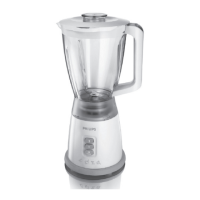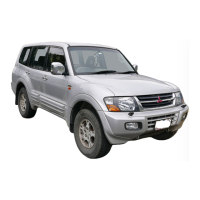Chapter 2 Part D General engine overhaul procedures
2D-15
9.12 Check the cylinder head gasket surface for warpage by
trying to slip a feeler gauge under the straightedge (see this
Chapter’s Specifications for the maximum warpage allowed and
use a feeler gauge of that thickness)
0
4
NEW VAL’. E
WORN VALVE
9.15 Check for valve wear at the points shown here
I
Valve tip 4 Stem (most worn area)
2 Keepergroove 5 Valve face
3 Stem (least worn area) 6 Margin
12 Using a straightedge and feelergauge, check the head gasket mating
surface for warpage (see
illustration).
If the warpage exceeds the limit in
this Chapter’s Specifications, it can be resurfaced at an automotive ma-
chine shop.
Note:
If the V6 engine heads are resurfaced, the intake man-
ifold flanges will also require machining.
13 Examine the valve seats in each of the combustion chambers. If
they’re pitted, cracked or burned, the head will require valve service that’s
beyond the scope of the home mechanic.
14 Check the valve stem-to-guide clearance by measuring the lateral
movement of the valve stem with a dial indicator attached securely to the
head
(see illustration).
The valve must be in theguideand approximately
l/16-inch off the seat. The total valve stem movement indicated by the
gauge needle must be divided by two to obtain the actual clearance. After
this is done, if there’s still some doubt regarding the condition of the valve
guides, they should be checked by an automotive machine shop (the cost
’ should be minimal).
Valves
15 Carefully inspect each valve face for uneven wear, deformation,
cracks, pits and burned areas. Checkthe valve stem for scuffing and gall-
ing and the neck for cracks. Rotafe the valve and check for any obvious
indication that it’s bent. Look for pits and excessive wear on the end of the
9.14 A dial indicator can be used to determine the valve
stem-to-guide clearance (move the valve stem as indicated by
the arrows)
VALVE MARGIN WIDTH
NO MARGIN
9.16 The margin width on each valve must be as specified (if no
margin exists, the valve cannot be reused)
9.17 Measure the free length of each valve spring with a dial or
vernier caliper
stem. The presence of any of these conditions (see
illustration)
indicates
the need for valve service by an automotive machine shop.
16 Measure the margin width on
eachvalve(seeiiiustration). Any valve
with a margin narrower than specified in this Chapter will have to be re-
placed with a new one.
Valve components
17 Checkeach valve spring for wear (on the ends) and pits. Measure the
free length and compare it to this Chapter’s Specifications
(see iiiustra-

